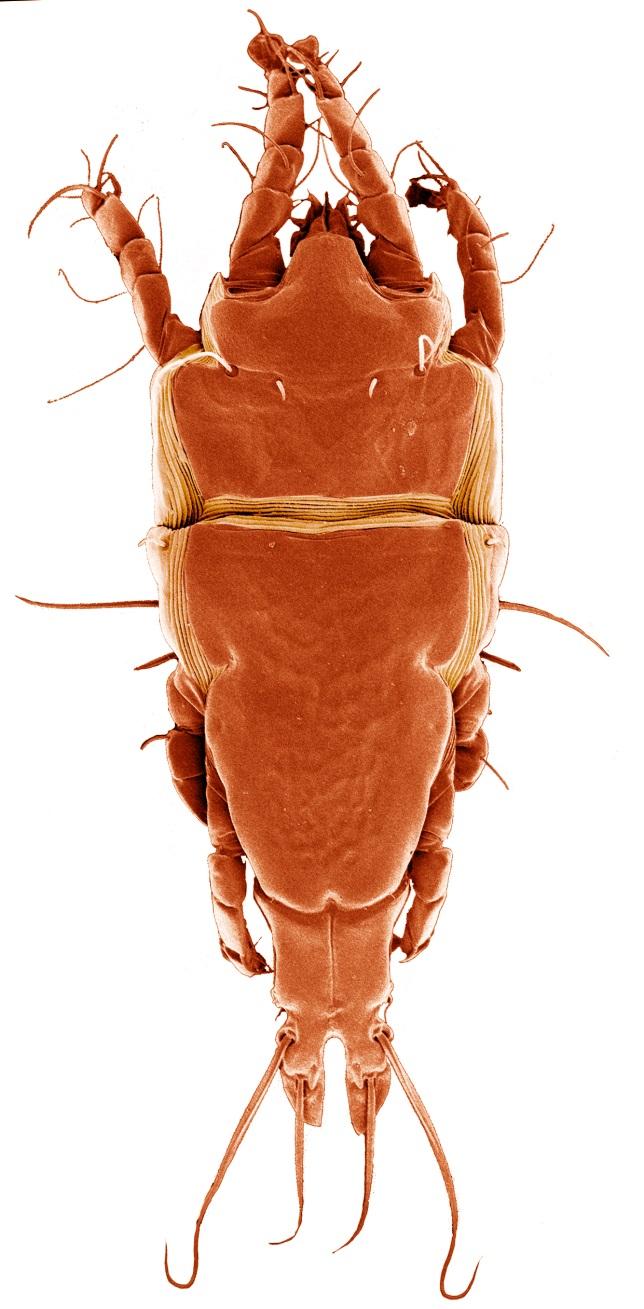A research in collaboration with the Spanish National Research Council (CSIC) has carried out a massive genetic study of the relationships between feather mites and birds

Credit: Heather Proctor (University of Alberta)
A genetic study uncovers that birds maintain a dynamic coevolutionary relationship with their feather mites. The study has involved the participation of the Estación Biológica de Doñana from the CSIC, and its results have just been published in the journal Molecular Ecology.
“This study shows that the host-switching – or colonization – of symbionts (in this case, bird-feather mites) towards other host species is a frequent phenomenon even for highly host-specific symbionts, suggesting a dynamic coevolutionary and codiversification scenario,” explains Roger Jovani, CSIC researcher from the Estación Biológica de Doñana.
In this work, it has been carried out a massive genetic study of the associations between the birds and their feather mites (25,500 mites analysed in 1,100 birds approximately) with the aim of identifying mites in unexpected host species. “The results show that, surprisingly, a 7.4% of the hosts and a 4.8% of the mites were part of the unexpected associations”, says Jovani.
The researcher explains that “furthermore, we have found no random patterns behind the unexpected associations which prove the relevance of ecological factors within the regulation of these dynamics: a higher frequency within the modules of the ecological mite-bird network and similar sizes among host species that shared unexpected mite species.
This work modifies the traditional belief that argued that the relationship of the symbionts with their hosts was highly stable at an ecological scale. “For example, in the case of host-specific symbionts (those associated with very few host species,), the colonization or host-switching was thought to be a very rare phenomenon, and therefore the coevolutionary and cospeciation processes should be the main responsibles of their coevolutionary dynamics,” says Jorge Doña, lead author of the study, current head of the R+D at AllGenetics and Postdoctoral Research Affiliate at the University of Illinois (USA).
Bird-feather mites are permanent symbionts of birds (they live their whole life cycle on their host). They are highly host-specific symbionts. Each species of these mites inhabits one or a few bird species; and therefore it was supposed that they maintained a highly stable relationship with their hosts at an ecological end evolutionary scale.
“However, recent studies at an evolutionary scale have inferred that the speciation process resulting from host-switching (speciation when reaching a new host species) and not the cospeciation (symbiont speciation after its host’s speciation) is the main process behind the diversification of these symbionts,” adds Jovani.
The relevance of the symbionts
The symbionts (that maintain a close parasistic, commensal or mutualistic relationship with their hosts) constitute the largest and most diverse group of organisms on the planet and are crucial for the ecosystem stability. In this sense, the study of the ecological and evolutionary aspects of the symbionts is vital to understand processes such as the emergence of transmissible diseases, pests in crops or the effect of climate change on the biodiversity.
###
Media Contact
Roger Jovani
[email protected]
0034-954-466-700
Related Journal Article
http://dx.




